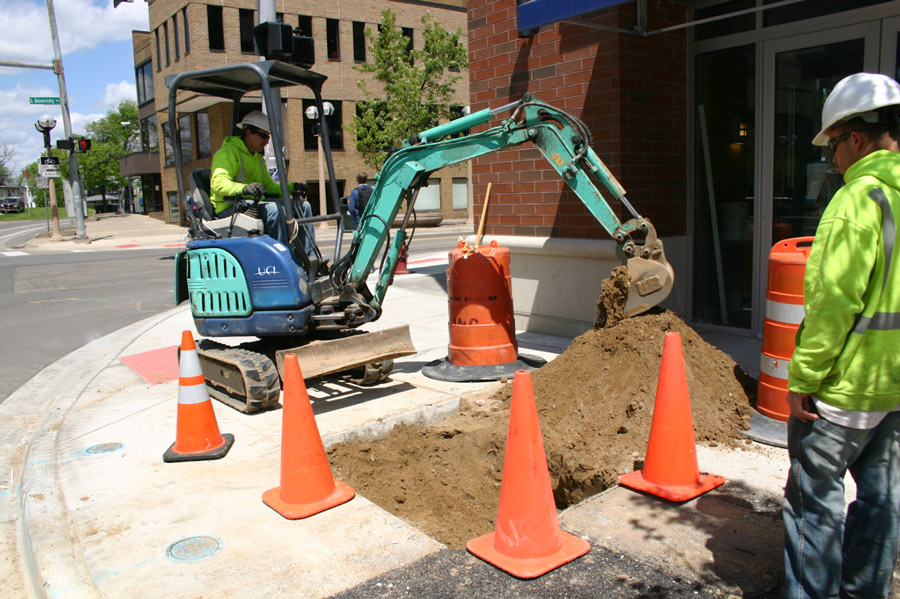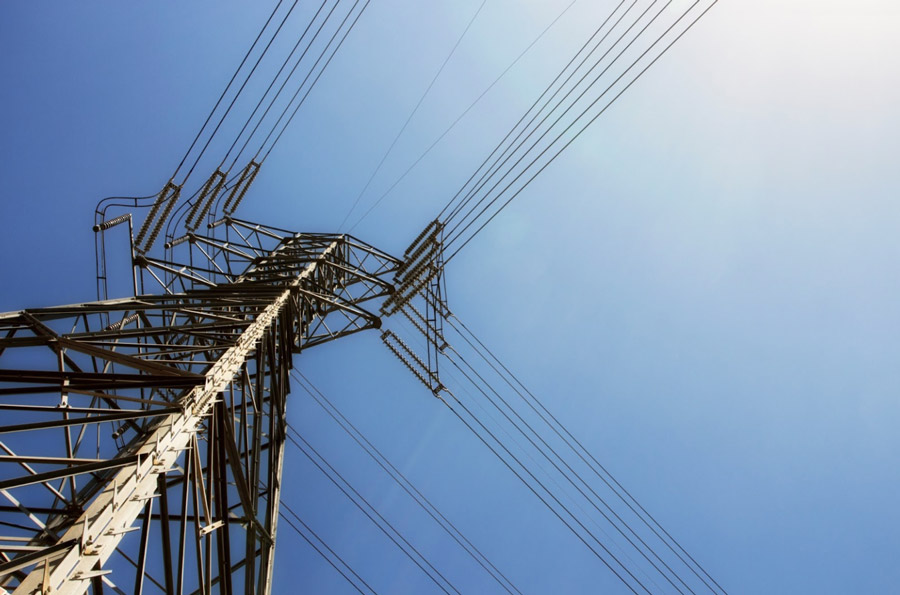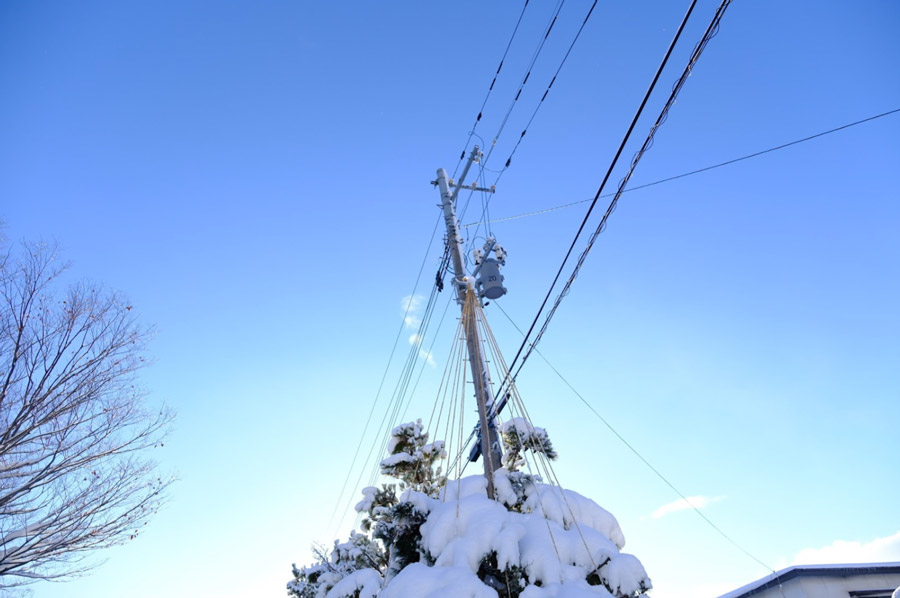Weather conditions play a crucial role in determining the success and safety of construction projects, both aerial and underground. From ideal weather that facilitates efficient work to adverse conditions that pose significant risks, understanding the impact of weather is essential for contractors. In this blog post, we will explore the ideal and non-ideal weather conditions for construction projects, highlight the dangers of bad weather, and emphasize the importance of implementing safety precautions on the job site.
Ideal Weather Conditions for Construction
Underground Contractors, Inc. is headquartered in Wixom, Michigan. Michigan residents are no stranger to the often bi-polar temperatures in our midwest state. An important part of the training program at UCI includes important weather safety information. Whether the crew is on land or up in the bucket, the weather plays a large role in how the project will move forward.
Mild Temperatures: Moderate temperatures create a comfortable work environment for construction crews. Excessively high temperatures can lead to heat-related illnesses and fatigue, while extremely low temperatures can hinder equipment functionality and increase the risk of accidents.
Clear Skies: Sunny weather with clear skies provides excellent visibility and ensures optimal working conditions for both aerial and underground projects. Adequate natural lighting reduces the chances of errors and enhances overall productivity.
Light Winds: Construction projects, especially those involving aerial work, can be completely safely in light wind conditions. All aerial foremen and linemen will work with a provided body harness, belt, and lanyard as they follow OSHA safety requirements.
Non-Ideal Weather Conditions for Utility Construction
In cases of non-ideal weather conditions, Underground Contractors, Inc. first assesses the weather as it is and as it is predicted to get. A professional utility contracting company should always stay in close contact with the client about the expectations of the project – if the weather proves to be unsafe for crew members, a delay in construction may be necessary. Non-ideal weather looks like:
Heavy Rain and Storms: Heavy rain and storms pose a significant threat to construction sites. They can cause flooding, muddy terrain, and erosion, making it difficult to maneuver equipment and pose hazards to workers. Rainwater can also damage materials, leading to potential project delays and increased costs.
Snow and Ice: Cold weather conditions with snow and ice can severely impact construction projects. Slippery surfaces increase the risk of falls and accidents, while snow accumulation can impede access to the site and hinder progress. Additionally, freezing temperatures may affect the functionality of machinery and materials.
High Winds: Strong winds, such as those experienced during hurricanes or tornadoes, can be extremely dangerous for construction projects. They can topple equipment, displace materials, and cause structural damage. It is crucial to monitor weather forecasts and take preventive measures in the face of high wind warnings.
The Dangers of Bad Weather
Adverse weather conditions can increase the likelihood of accidents and injuries on construction sites. Slippery surfaces, reduced visibility, and unstable terrain contribute to falls, equipment malfunctions, and other potential dangers. Workers must be vigilant and follow safety protocols to mitigate risks. When you’re searching for a job as a utility contractor, make sure you are looking for a company that not only values your safety but prioritizes it. UCI offers on-the-job training for new employees and offers training opportunities throughout the year for their employees from the industry’s most knowledgeable voices.
Inclement weather can disrupt construction schedules, leading to project delays and increased costs. Adverse conditions may require temporary halts in work, equipment maintenance, and repair, impacting productivity and extending project timelines. Underground Contractors, Inc. has a spotless safety record. With this emphasis on safety, UCI is able to complete jobs on time and within the budget.
Severe weather conditions, such as heavy rain, storms, or extreme temperatures, can damage construction equipment and materials. Water damage, corrosion, and freezing temperatures can compromise the structural integrity of equipment, leading to costly repairs or replacements. When this happens, it’s important to trust that the utility contractor you’re working with is aware of their equipment becoming unusable. UCI keeps their state-of-the-art equipment in top shape thanks to their on-site mechanics.
Importance of Safety Precautions on the Job Site
Importance of Proper Training and Education
Comprehensive safety training programs ensure that workers are equipped with the knowledge and skills to handle adverse weather conditions. This includes understanding the risks associated with different weather scenarios and implementing appropriate safety measures. Conducting regular inspections of the job site helps identify potential hazards and maintain a safe working environment. This includes checking equipment for damage, ensuring proper storage of materials, and assessing the stability of structures.
Using Protective Gear and Equipment
Providing workers with appropriate personal protective gear (PPE) is essential in ensuring their safety during adverse weather conditions. This may include items such as hard hats, high-visibility clothing, gloves, and footwear with slip-resistant soles. Additionally, specialized equipment like harnesses and fall protection systems should be utilized when working at heights or in windy conditions. Underground Contractors, Inc. has state-of-the-art accessories and machinery in order to protect their employees at all times.
Communication and Emergency Plans
Clear communication channels and emergency plans should be established to ensure that all workers are informed about potential weather-related risks and evacuation procedures. Regular safety meetings and briefings can help reinforce safety protocols and provide updates on weather conditions.
Monitoring Weather Conditions
Utilizing weather monitoring tools and services can help construction companies stay informed about changing weather patterns. This enables proactive decision-making, such as rescheduling work or taking additional safety measures when adverse weather is imminent.
Safety During Non-Ideal Weather: Final Thoughts
Weather conditions significantly impact both aerial and underground construction projects. While ideal weather conditions promote efficient work and enhance productivity, adverse weather poses numerous risks and challenges. Recognizing the dangers of bad weather and implementing robust safety precautions on construction sites are vital to safeguarding workers, minimizing project delays, and mitigating potential damages. By prioritizing safety and adapting to weather conditions, utility contracting companies like UCI can ensure the successful completion of projects while protecting the well-being of their teams.
Whether you’re looking for a quote on your next aerial or construction project or looking for a career with a construction company that values your safety above all else – view our services and job opportunities on our website!




